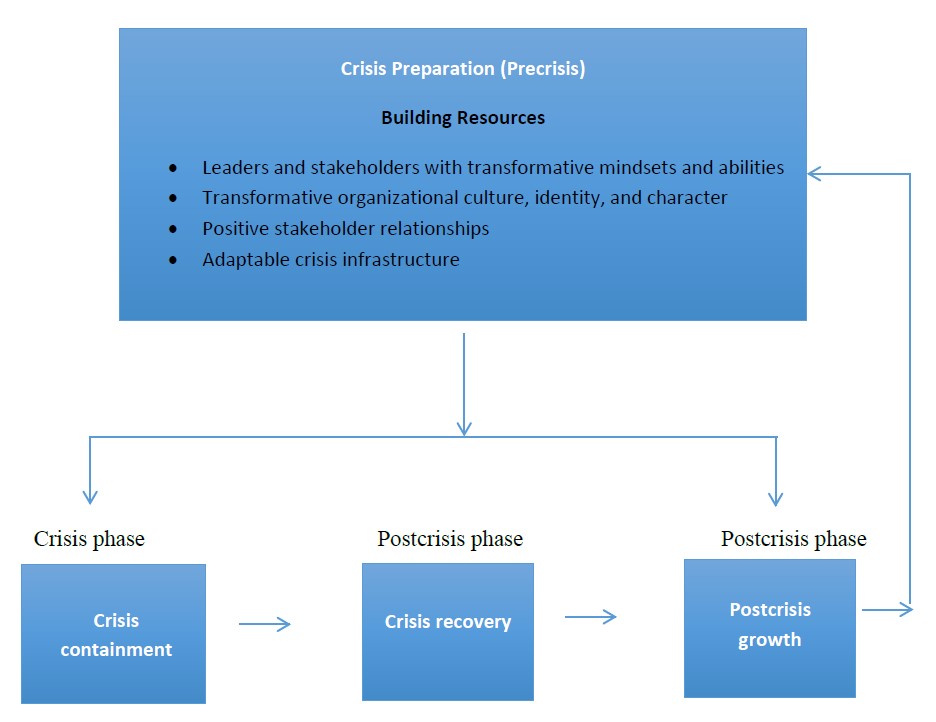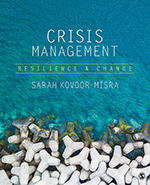When a Crisis Hits: Be Resilient and a Catalyst for Positive Change
One of the challenges for leaders when faced with a crisis is the tendency to deny and minimize it, or reactively take action which often escalates the situation. These tendencies were evident in the Volkswagen defeat device and the Wells Fargo fraudulent bank account crises, where leaders first turned a blind eye and took on a defensive posture.
In my book, Crisis Management: Resilience and Change, I suggest that leaders can instead choose to take a thoughtful, positive, resilient, and transformative approach to crisis management. Through this approach, they can not only prevent or quickly contain damage, but the organization and its key stakeholders can strengthen trust, gain new insights, and emerge with capacities that can be helpful to more effectively cope with future crises and other challenges.
Positive resilience is the ability to overcome challenges without taking unfair advantage of others. Creating a defeat device in the Volkswagen crises or opening fraudulent bank accounts by Wells Fargo employees are examples of negative resilience. This latter form of resilience solves problems in the short-term but eventually results in crises for most organizations. Instead, positive resilience enables organizations to solve problems without compromising their reputation and brand. In addition, when leaders and their organizations are transformative, they are, not only overcoming challenges, but are catalysts for positive change in their environments. Resilience enables leaders and others to be transformative, as it gives them the confidence to think beyond themselves. In turn, the experience of being transformative reinforces their confidence. See Figure 1.

A positive resilient and transformative approach during a crisis and in its aftermath requires four key capabilities. These capacities can be built prior to a crisis, can be further developed as leaders think on their feet during a crisis, and from lessons learned after a crisis. See Figure 2.
Figure 2. Phases of a transformative crisis management approach.

These four capacities are:
- Leaders and stakeholders with transformative mindsets and abilities. A transformative mindset is comprised of beliefs, values, and traits that support courage, excellence, innovation, and integrity during crisis management. In addition, it requires multiple forms of intelligence to be able to navigate the cognitive, emotional, political, relational, and moral complexities and minefields associated with a crisis. For example, the Taj Mahal Palace hotel had taken the initiative to hire and train leaders and other employees with these capacities, and this enabled them to be resilient, innovative and transformative when they were attacked by terrorists in 2008. Their employees kept guests calm, helped many escape, and reduced the loss of lives.
- Organizational culture, identity, and character. Transformative values and traits, such as relationship orientation, integrity, courage, hope (RICH), resilience, innovation, social responsibility, excellence, and nonstop learning (RISEN) also need to be a part of the organization’s culture, identity, and character. The organizational culture is the shared beliefs and values that inform employees as to how to behave. The organizational identity consists of the core traits that define the organization for its members. Finally, the organizational character is formed by the defining moral beliefs and traits of the organization. These beliefs, values, and traits guide behavior during crisis management. For instance, prior to the 1982 Tylenol crisis, leaders at Johnson & Johnson had defined a credo and built these resilient and transformative components into the organization and it enabled them to be skillful during the crisis.
- Positive Stakeholder Relationships: Organizations that have a network of positive relationships that include employees, customers, investors, suppliers, community members, and relevant governmental agencies have access to resources, such as information, support, and goodwill during crisis management. For example, during the Boston Marathon terrorist attack of 2013, a network of stakeholders, such as various governmental agencies and the general public were instrumental in finding the perpetrators and containing the crisis.
- Adaptable Infrastructure: Having in place well-trained crisis management teams who have previously strategized and devised crisis plans and who have access to necessary resources can enable leaders to be agile and skillful during a crisis. For instance, in the Boston Marathon crisis, the prior preparedness of various governmental agencies in terms of handling an improvised explosive device enabled them to coordinate effectively with each other and quickly contain the crisis. Crisis plans and teams, however, need to take a multidimensional approach and address not only obvious operational issues, but also address the psychosocial damage from the crisis.
It is not possible for leaders to have considered every eventuality prior to a crisis. For instance, the COVID-19 pandemic took most organizations by surprise. In these situations, the above four capacities can be critical as they can enable leaders and their organizations to improvise and respond quickly within well-understood boundaries of morality, as they face the novelty and ambiguity of new forms of crises.
To be able to build resilience and transformative capacity within organizations also requires awareness. In my book, I provide some tools to enable organizations to assess their capacity and identify areas for change. For instance, individuals can evaluate their task, relationship, and self-management capacities, or leaders can assess their organizations’ transformative values and traits, and the extent to which they have built positive stakeholder relationships and adaptable infrastructure.
To conclude, effective crisis management requires leaders to accept that both predictable and new forms of crises can threaten their organizations. They therefore need to invest time and resources in building resilient and transformative capacities within themselves and their organizational systems. In addition, when a crisis hits they need to stay calm, be thoughtful, and use these capacities so that they can take a positive, resilient, and a transformative approach. The reward for these efforts can be high and result in positive outcomes, such as damage being minimized, strengthened stakeholder trust, an enhanced brand, pride amongst employees toward the organization, and new insights and knowledge.

































































































